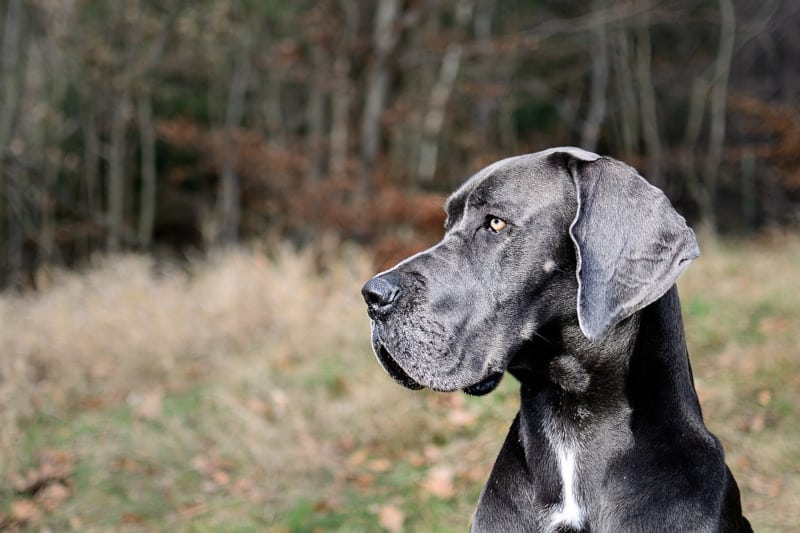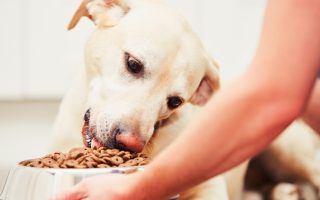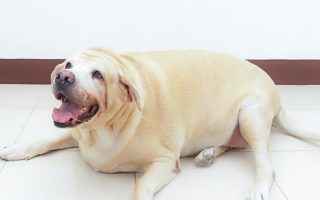Are you dealing with a bad case of Labrador shedding this molting season?
Here are the basics on what you need to know about Labrador shedding and how to deal with it.
What Causes a Labrador to shedding?
It is healthy for dogs to shed. That is how they lose damaged or old hair. How much and how often they shed will depend on their breed and health.
One of the most common causes of shedding is the weather. Many dogs will develop thicker coats to keep them in the winter. They shed the coat in spring, which is when most dogs tend to shed more. Seasonal shedding is common for Labradors.
Labradors shed a lot because they have a double coat. They come from an island in Newfoundland, which is very cold. They love to swim in icy cold waters. That is why Labradors have two coats of fur to protect them from the cold.

As we have discussed in our previous post, the silky and waterproof layer of fur is called the topcoat. It keeps your Lab from getting cold. That is because it keeps their skin dry, as it isolates the skin from the wind whenever they get out of the water.
On the other hand, the dense, short layer of fur is the undercoat. It helps regulate your Lab’s temperature and protect their skin from the sun. It also keeps your canine companion warm by growing thicker when it is winter. To keep your Lab cool, the undercoat sheds and becomes thinner in the summer.
So, your Labrador will shed a bit all year round. However, they will experience more hair fall during spring and summer because the weather is warmer, and their undercoat is shedding.
Here are some other causes for bald patches and shedding:
- Allergies/sensitivities
- Bacterial or fungal infections
- Parasites like mites, lice, or fleas
- Lactation or pregnancy
- Adrenal, thyroid, liver, and kidney disease
- Contact with caustic or irritating substances
- Sunburn
- Immune disease
- Cancer
- Self-inflicted trauma from biting, licking, scratching, etc.
- Certain medications
- Stress
Treatments for Labrador Shedding
If your Labrador sheds because the weather is warmer, then the simplest solution is to brush them daily. You can gently brush your Labrador twice a day for 10-20 minutes to efficiently remove excess hair during shedding season. Brushing 2-3 times a week is fine during colder months.
Deshedding brushes like slicker brushes are ideal to use. You can use a slicker brush to reach the undercoat and remove loose hairs. Or, you can also finish off the brushing with a bristle brush to boost shine and remove any loose top hairs.
You should also not let your Labrador develop matting. While Labradors require less grooming than most breeds, they can still get matted fur if you neglect it. Therefore, you need to regularly brush them to avoid that.
You can also occasionally bathe your Lab to help deal with the shedding. However, you should not bathe your Labrador too often. You should only bathe your dog when they are very dirty or once a month.
If your dog has allergies or sensitivities, then you need to consult a vet. A vet will help you change your Lab’s diet accordingly to help decrease shedding. You can also ask your vet to vaccinate and deworm your dog as needed.
If your dog excessively sheds from other causes like infections and immune diseases, it would be best to consult a veterinarian.
Can I Shave My Labrador?
You might feel tempted to shave your Labrador before spring and summer comes around because it can prevent shedding by removing hair. But does that mean you should shave your Labrador?
No. As we have previously mentioned in our post, you should never shave your Labrador, no matter how much they shed. For one thing, it can ruin their fur. When you remove their undercoat, it will be prickly and hard. It will also not feel or look the same once it fully regrows. Plus, it will feel uncomfortable and itchy for your Labrador Retriever.
When your Labrador sheds a lot, it will typically be when it is sunny, which may be the worst time to shave them (which you should never do). The undercoat protects their skin from the sun. If you remove their undercoat, they will be much more likely to get a sunburn.
You will also ruin your Lab’s insulation if you shave them. As mentioned earlier, your Lab’s undercoat keeps them warm and cool during different seasons. If you remove their undercoat, it will never be the same, and your Lab will no longer be able to regulate their temperature.
Your Lab’s overcoat will also protect the skin from moisture and dirt. It is especially crucial if you have an active Labrador who loves to play outside. If they do not have that protection, the dirt and water will get all over your furniture, clothes, and carpet, among others.
Lastly, the main reason you should not shave your Labrador is that shaving your Lab will not stop shedding. Your Lab will shed the new prickly and short hairs that they grow, but the new hair will be much harder to clean up.
Instead, you should make sure you brush them regularly, as mentioned earlier.
When Should I Bring My Labrador to a Veterinarian?
If your dog is just shedding from minor problems or seasonal changes, then you may not need to bring your Lab to a vet. However, if your dog has excessive shedding to the point they have bald patches, then you may need to bring them to a vet.
If your dog shows symptoms of skin allergies, such as red patches and rashes, then they need a veterinarian. You should definitely bring your Lab to see a vet if they keep scratching or if they keep licking certain areas until they have bald patches.
Another sign that you need to bring your Lab to the vet is if they have dry and dull hair that can easily get pulled out. You should also be quick if you notice your Lab having any kind of open sore.
To Conclude
Labrador shedding is quite normal, and you can deal with it by brushing them regularly. If they have unusual issues, then you ought to bring your Labrador to a veterinarian to properly address the issue.







